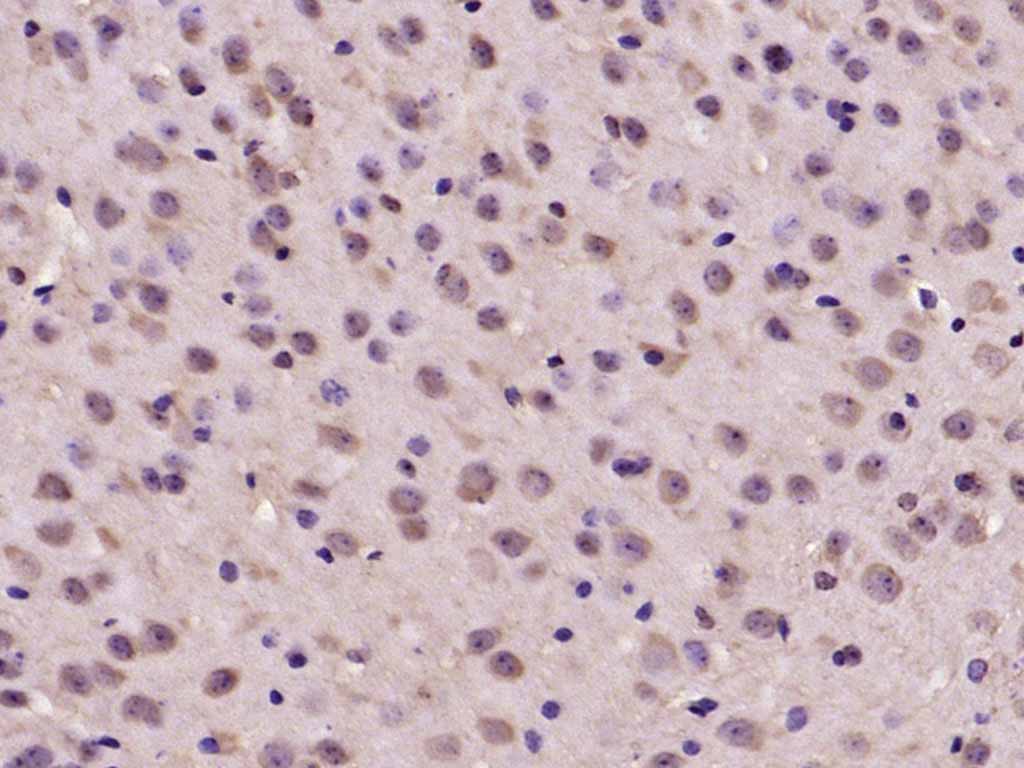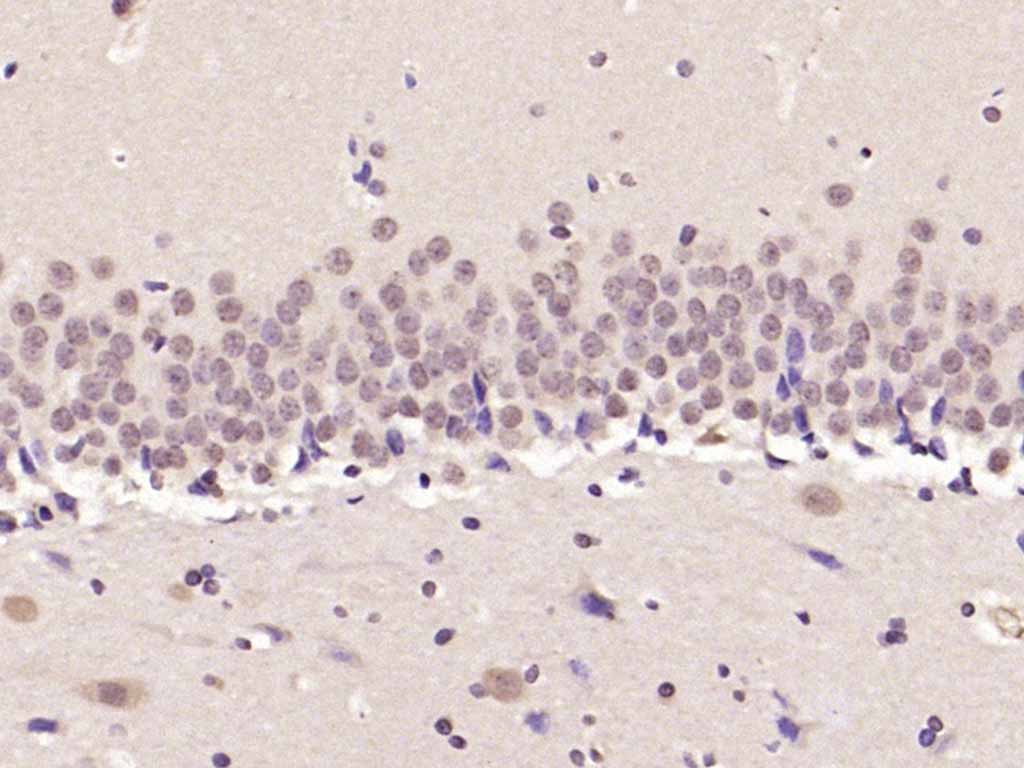
Rabbit Anti-ADNP antibody
Activity dependent neuroprotective protein; Activity dependent neuroprotector; NAP; KIAA0784
View History [Clear]
Details
Product Name ADNP Chinese Name 活性依赖的神经保护肽抗体 Alias Activity dependent neuroprotective protein; Activity dependent neuroprotector; NAP; KIAA0784 literatures Research Area Cell biology Neurobiology Apoptosis transcriptional regulatory factor Immunogen Species Rabbit Clonality Polyclonal React Species Mouse, Rat, (predicted: Human, Chicken, Dog, Cow, ) Applications WB=1:500-2000 ELISA=1:5000-10000 IHC-P=1:100-500 IHC-F=1:100-500 IF=1:100-500 (Paraffin sections need antigen repair)
not yet tested in other applications.
optimal dilutions/concentrations should be determined by the end user.Theoretical molecular weight 114kDa Cellular localization The nucleus Form Liquid Concentration 1mg/ml immunogen KLH conjugated synthetic peptide derived from human ADNP: 331-400/1102 Lsotype IgG Purification affinity purified by Protein A Buffer Solution 0.01M TBS(pH7.4) with 1% BSA, 0.03% Proclin300 and 50% Glycerol. Storage Shipped at 4℃. Store at -20 °C for one year. Avoid repeated freeze/thaw cycles. Attention This product as supplied is intended for research use only, not for use in human, therapeutic or diagnostic applications. PubMed PubMed Product Detail The activity dependent neuroprotective protein (ADNP) gene is frequently amplified in many neoplasias, including breast, bladder, ovarian, pancreatic, and colon cancers. ADNP mRNA is abundantly expressed in distinct normal tissues, and high expression levels were encountered in malignant cells. ADNP is implicated in maintaining cell survival, perhaps through modulation of p53. The encoded protein contains one homeobox and nine zinc finger domains, suggesting that it functions as a transcription factor.
Function:
Potential transcription factor. May mediate some of the neuroprotective peptide VIP-associated effects involving normal growth and cancer proliferation.
Subcellular Location:
Nucleus (Potential).
Tissue Specificity:
Widely expressed. Strong expression in heart, skeletal muscle, kidney and placenta. In brain, expression is stronger in the cerebellum and cortex regions. No expression detected in the colon. Strong increase of expression in colon and breast cancer tissues.
Similarity:
Contains 9 C2H2-type zinc fingers.
Contains 1 homeobox DNA-binding domain.
SWISS:
Q9H2P0
Gene ID:
23394
Database links:Entrez Gene: 23394 Human
Omim: 611386 Human
SwissProt: Q9H2P0 Human
Unigene: 570355 Human
是一个潜在的transcriptional regulatory factor,参与正常细胞与Tumour细胞的增殖调控。
广泛分布于大脑、小脑等组织,在肺、肾、小肠以及睾丸等组织也有微弱的表达。对体外培养的glia缺失神经元细胞有保护作用.Product Picture
Partial purchase records(bought amounts latest0)
No one bought this product
User Comment(Total0User Comment Num)
- No comment




 +86 571 56623320
+86 571 56623320




